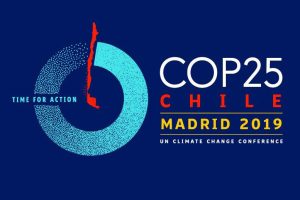21 September 2019: The UN Environment Programme (UNEP) has published an advance chapter on mitigation from its upcoming 2019 Emissions Gap Report, which concludes that while Group of 20 (G20) countries have significant opportunities to reduce their emissions, collectively they are currently not on track to meet their commitments under the Paris Agreement on climate change.
The chapter titled, ‘Bridging the Gap: Enhancing Mitigation Ambition and Action at G20 Level and Globally,’ which was released ahead of the UN Secretary-General’s Climate Action Summit, says that G20 members, which account for around 80% of global emissions, have the opportunity to ramp up action when they submit the next round of Nationally Determined Contributions (NDCs) in 2020. It argues that countries must at least triple the level of ambition of their current NDCs to keep global average temperature rise to below 2°C above preindustrial levels, while a 1.5°C goal would require increasing ambition five-fold.
The chapter analyzes the cause of the shortfall, underscoring gaps in all areas with high emissions reduction potential. It explains that: too few countries have committed to net zero emission targets; economy-wide climate action remains limited in areas such as ending fossil fuel subsidies, introducing carbon pricing and ensuring that finance flows are consistent with the Paris Agreement; national commitments to decarbonize electricity supplies cover less than 1% of global emissions from electricity generation; countries and states are not setting ambitious targets for industry; and commitments to zero net deforestation targets are not supported by action on the ground.
The chapter explains that G20 nations can fill these gaps and meet climate goals by taking advantage of technological advances and economic developments, maximizing synergies between climate and development goals, and building on climate action commitments by sub-national and non-state actors. For example, 70 cities housing 425 million people have committed to carbon neutrality.
The chapter explains that many drivers of ambitious climate action are increasingly less costly, more numerous and better understood. For example, renewable energy is the cheapest source of new power generation in most of the world.
The chapter also cites an increase in documented research linking ambitious climate action, economic growth and sustainable development. For example, the Global Commission on the Economy and Climate estimates that ambitious climate action could generate USD 26 trillion in economic benefits between now and 2030, create 65 million jobs in 2030 and avoid 700,000 premature deaths from air pollution.
The chapter highlights possible actions by G20 members, including:
- shifting towards increased use of public transport in large metropolitan areas in Argentina;
- committing to full decarbonization of Brazil’s energy supply by 2050;
- banning new coal-fired power plants in China;
- adopting regulations to refrain from investing in fossil fuel infrastructure in the EU;
- an economy-wide green industrialization strategy towards zero-emission technologies in India;
- an increase in carbon pricing levels in Japan, prioritizing the power and building sectors; and
- vehicle and fuel economy standards in the US that target zero emissions from new cars in 2030.
The full Emissions Gap Report will be released in late November, ahead of the Santiago Climate Change Conference in December, and will contain a detailed G20 update.
UNEP has been producing the annual Emissions Gap Report since 2010. The report assesses the gap between countries’ pledges on emission reductions and reductions required to deliver on the 2°C goal by the end of this century. [Bridging the Gap: Enhancing Mitigation Ambition and Action at G20 Level and Globally] [Advance Chapter Landing Page] [UNEP Press Release on Advance Chapter] [UNEP Press Release on G20 Opportunities for Climate Action] [SDG Knowledge Hub Story on Lessons Learned from a Decade of Emissions Gap Assessments]
SDGs
Issues
- Follow-Up and Review,
- Atmosphere,
- Mitigation,
- Deforestation & Forest Degradation,
- Climate Change,
- Economics & Investment,
- Energy,
- Renewables,
- Forests & REDD,
- Governance,
- Other Energy Sources,
- Human Settlements & Population,
- Monitoring & Evaluation,
- Sustainable Consumption & Production,
- Sustainable Development,
- Stakeholder Participation


